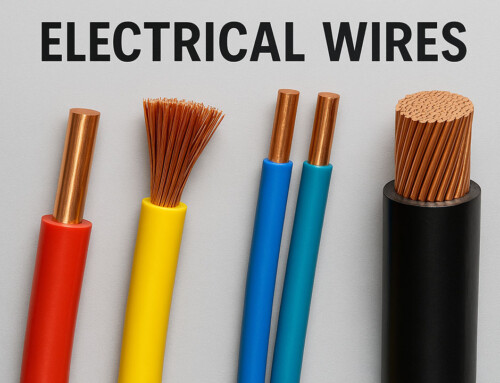Table of Contents
Transformers are like the unsung heroes of our electrical world. They work behind the scenes, adjusting electric current by either boosting or reducing its voltage. Think of them as regulators for electricity, just like a valve regulates water pressure.
You’ve probably noticed that larger transformers, especially those on power lines, sometimes emit a low humming sound. It’s a familiar noise, but have you ever wondered what makes a transformer hum? Let’s take a closer look and uncover the reasons behind this intriguing phenomenon!
Why Do Transformers Hum?
When it comes to what makes a transformer hum, the main culprit is magnetostriction. This fancy word refers to how certain materials expand and contract when they are around magnetic fields. So, when a field is applied, the molecules stretch out. And then, when the field goes away, they shrink back to their original shape.
Now, here’s where it gets a little noisy: A transformer creates magnetic excitement with alternating voltages and currents. This whole magnetic dance produces lines of force that run through something called the core of the transformer – kind of like invisible magnet highways.
So, suppose you crank up those levels of force (also known as flux) in a transformer. In that case, you also crank up its noise levels due to more magnetostriction action happening. The core itself is made up of lots of little magnetic sheets that also expand and contract in response to all this magnetism coming from inside the transformer.
These movements aren’t smooth sailing either. They can be all over the place, which causes different multiples (like harmonics) of noise frequencies being emitted by your buzzing buddy. Even though these movements are too tiny for our eyes, they are big enough for some good old vibration action!
What are the External Factors That Result in a Humming Transformer?
Other things adding their unique notes into this symphony orchestra concert called “transformer noise” include:
- Windings: The expansion and contraction of transformer windings, along with the current flow, can also play a part in creating noise within the system.
- Fans: If a transformer is generating more heat, it might require additional fans. However, these fans can contribute to the overall operational noise of the transformer.
- Age: As the transformer ages, the layers in its core may start to separate. This leads to increased noise when it vibrates.
How Do You Characterize the Sound-producing Mechanisms of Transformers?
Transformer cores are usually known as the primary source of a humming transformer. However, electromagnetic forces in the windings, called load noise, can also have a significant impact on low-sound-level transformers. Various electrical and mechanical factors influence this.
Let’s break down the mechanisms that produce sounds in transformers:
1. Core Sound
When a strip of iron is magnetized, it undergoes magnetostriction – causing it to change its physical dimensions. As the magnetization is removed, the iron strip returns to its original condition and shape with only a minute change in physical dimension.
When the thin iron cores of transformers become magnetized, the magnetic field acts between adjacent plates – stretching and squeezing both adhesive and insulation between them.
A transformer gets magnetically excited by an alternating voltage and current so that it expands and contracts twice during a complete cycle of magnetization – regardless of magnetic flux direction.
2. Load Sound
In transformers, most of the noise comes from the winding vibrations. The transformer tank walls and magnetic shields can also cause noise due to electromagnetic forces from the load currents. These forces are proportional to the square of the load currents.
The frequency of this noise is usually double that of the power frequency. Sometimes, mechanical frequencies in clamping systems may resonate with electromagnetic forces, making the noise much louder.
When there are harmonics in load current and voltage (like in rectifier transformers), vibrations at twice harmonic frequencies can significantly increase a transformer’s overall sound level.
Changes in load current magnitude and phase angle affect internal voltage drop in transformer windings. This influences core sound levels by changing core induction levels under different loading conditions. Harmonic content has a more significant impact on sound level than expected because it interacts with power frequency load current.
Current harmonics significantly contribute to increased sound levels in HVDC and rectifier transformers. Nonlinear loads lead to excitation voltage harmonics, resulting in higher core sound levels.
3. Fan and Pump Sound
The critical source of heat in power transformers comes from copper loss in the windings and core (I2R losses). To manage this heat, cooling fans are often used to blow air over radiators or coolers. Interestingly, the noise from these fans tends to contribute more to the overall noise for smaller-rated transformers and low-induction transformers.
Several factors that make a transformer hum include blade design, tip speed, radiator arrangement, and number of fans.
When it comes to sound frequency, cooling equipment noise tends to dominate at very low and high frequencies. On the other hand, core noise takes over within the intermediate range of frequencies between 100 Hz and 600 Hz.
4. Mechanical and Structural Sound
The way the transformer is put together, and the materials used can really affect how much it vibrates and how noisy it gets. If the magnetic shielding isn’t designed well, it can also make a lot of noise in transformers!
5. The sound Caused by DC Magnetization
When a transformer core experiences even a small amount of DC magnetization, it can lead to a noticeable increase in the audible sound produced by the transformer. This not only raises the power level of regular harmonics in the vibrations (such as even harmonics of power frequencies) but also introduces odd harmonic tones into the overall sound level.
Modern cores are designed with high remnant flux density, which means that when they are activated, their sound levels can be up to 20 dB louder than their factory test value. As a result, it’s advisable to let a newly energized transformer run for about six hours before assessing its sound levels.
In the past, circuits like DC feeders for transportation systems were typical sources of DC fields in transformers. However, there is now an expanding range of potential sources for DC magnetization. This is due to the increased use of electronic power equipment in power transmission systems and industries.
Geomagnetic storms affecting long transmission lines connected to transformers are also sometimes responsible for DC magnetization.
6. Acoustical Resonance
Various factors, including atmospheric absorption, intervening barriers, and reflective surfaces, influence the propagation of sound. The sound wave has the potential amplification through reflected waves or radiated waves via walls, floors, ceilings, and mechanical vibrations from air ducts and mounting bases.
Dry-type transformers are commonly installed indoors within buildings where room walls may have low absorption coefficients, leading to reflection back and forth between walls. This can result in the accumulation of higher-than-expected noise levels.
Is a Humming Transformers a Cause for Concern?
Transformers are built to hum a little. It’s a regular part of their operation. The slight hum you hear is caused by the physics we discussed earlier. So, there’s no need to worry if the sound is faint and steady.
However, if the hum becomes noticeably louder or changes its pitch or rhythm, that could be a sign of trouble. This could be due to loose internal components, core material problems, or even overloading.
If you experience a significant change in the transformer’s humming pattern, it’s best to err on the side of caution. Consult a qualified electrician to diagnose the issue. They can determine if the transformer is functioning safely or if repairs are needed.
How to Reduce Humming Noise In Transformers?
Reducing noise in a transformer is more complex than simply reducing flux, as it involves various factors such as system requirements and the number of turns in the winding. Additionally, the relationship between flux and magnetostriction is not straightforward.
Increasing magnetization does not result in an equivalent change in magnetostriction. Therefore, using flux to adjust noise levels is not economical and may not effectively reduce the noise.
Instead of relying solely on adjusting flux, there are other effective methods for minimizing transformer hum that can be utilized. To reduce the humming noise in your transformer, follow these steps:
- Find the Right Spot: Install your transformer in a suitable location to minimize noise.
- Avoid Tight Spaces: Keep the transformer away from corners, stairways, and corridors to prevent sound amplification.
- Soundproofing: Use noise-dampening materials around the transformer to absorb and reduce the noise.
- Stable Mounting: Mount the unit on a solid surface to minimize vibrations and noise.
- Secure Enclosures: Ensure that all bolts on the enclosures are adequately tightened to reduce any rattling or vibrations.
- Choose Quality: Invest in a transformer from a reputable and quality manufacturer for better noise control.
To conclude, the phenomenon of humming transformer is influenced by various factors like magnetostriction, windings, fans, and load noise. These elements contribute to the recognizable hum that transformers produce. Understanding the causes of transformer noise is essential for effectively reducing it.
Also, when it comes to reducing the humming noise in transformers, the practical steps mentioned in this blog post can be super helpful. Furthermore, if you have any concerns about the transformer’s humming pattern, it’s always best to consult a qualified electrician for a thorough diagnosis.






